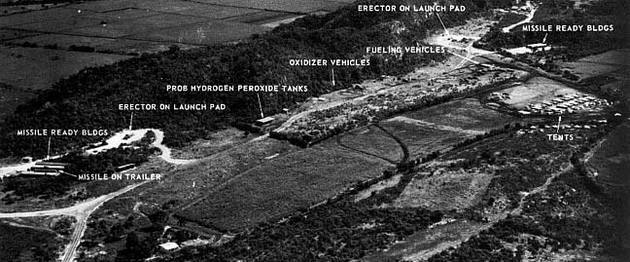THE Missile Crisis, which took place in October 1962, was a diplomatic incident between the United States and the Soviet Union, over the installation of missiles in Cuba.
The event is considered the most tense moment in the Cold War when the world had a real chance of succumbing to nuclear war.
Background
United States and Soviet Union were leaders of antagonistic ideological blocs during the Cold War period. The first defended capitalism, while the USSR, socialism.
Both vied for each country in order to increase their zones of influence, either through financial aid or military intervention. Despite this, both countries never faced each other directly.
With the victory of the forces of Fidel Castro (1926-2016) in the Cuban Revolution in 1960, the United States lost an ally. When Castro announced the implantation of the socialist regime on the island, the Americans knew they had gained an enemy.
The Americans' response was to enact an economic embargo on Cuba, causing instability in its economy.
Missile Crisis Summary

In November 1961, the United States installed fifteen nuclear missiles "Jupiter" in Turkey and 30 missiles in Italy. These weapons had a range of 2400 km and threatened Moscow.
With the beginning of the American embargo on Cuba, the United States began to monitor ship traffic to the Caribbean island and noticed an increase in the circulation of Soviet-flagged vessels.
On October 14, 1962, U2 spy planes photographed the São Cristóvão region. The images reveal base constructions and installed nuclear warheads, including ramps that would allow the launch of missiles.
For the United States, it was unacceptable to have nuclear missiles so close to its territory, while for Cuba, the weapons were a guarantee that they would not be invaded again. already the USSR, showed that it could install weapons on the American continent.
Then a strong dispute between the two countries would begin. O President Kennedy (1917-1963) decides to manage the crisis with his group of closest collaborators and strives to achieve a peaceful solution.
On the other hand, the US General Staff prefers an invasion of the Caribbean island or a pre-emptive air strike.
Quarantine to Cuba
Thus, the United States chooses to make a naval blockade of Cuba, a quarantine, as it was called.
In it, the US Navy would inspect Soviet-flagged ships and those that contained weapons would be sent back to their home port. The initiative was supported by NATO.
In Cuba, the population took to the streets to defend the Revolution and criticize what they considered an intervention in their internal affairs. Likewise, the Cuban army mobilized in anticipation of an American invasion.
As for the USSR, President Nikita Kruschev (1894-1971) did not show signs of retreating. He even asked the Cubans to fire in groups of planes that flew over the island.
Solution to Missile Crisis
Only on October 26, the Soviets offered another solution: they would commit to withdrawing the missiles, if the U.S not invade Cuba.
The next day, an American U2 was shot down on the island, prompting American generals to pressure President Kennedy for an air strike.
Faced with the impasse, the United Nations Organization convenes its Security Council. On October 28, Khrushchev agrees to withdraw the missiles from Cuba.
Later, in an unofficial agreement, the Soviets demanded the withdrawal of the missiles in Turkey, which was done by the United States.
Consequences of the Missile Crisis
After two weeks of tense relations between the United States, USSR and Cuba, the dispute came to an end.
The incident sparked the creation of a direct line of contact between the White House and the Kremlin that would become known as the "red phone".
In this way, the Missile Crisis was another chapter between the two world political poles, as was the Korean War and how would the Vietnam War, among other conflicts.
Curiosity
In each country, the episode was given a distinct name: Caribbean crisis, in the USSR; October crisis, in Cuba and Missile Crisis, In the USA.
See too:
- Cold War Questions
- Differences between Capitalism and Socialism



